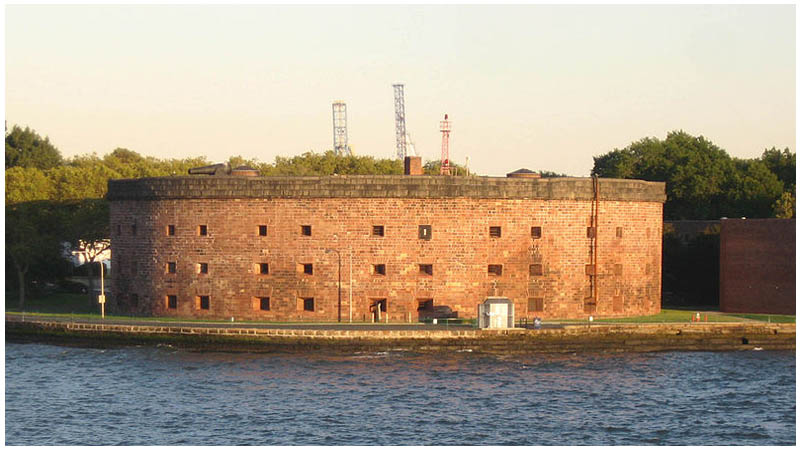Where the Hudson and East rivers meet in New York Harbor, no more than 800 yards to the south of Manhattan Island, stands Governors Island. The 172 acre isle began it’s service as an important military outpost protecting New York City and her inner harbor in 1794.
It later became a major command headquarters, up until 1966 when the U.S. Army handed the property over for use as the Coast Guard Atlantic Area Command. Much of this popular historic destination, accessible by ferry from May to September, is now under the care of the Trust for Governors Island.
The imposing red sandstone fortress that is Castle Williams stands on the island’s northern tip, within the boundary of what is today the Governors Island National Monument. The castle was erected from 1807 to 1811 as part of the network of defensive forts, together with Fort Columbus, Castle Clinton, Fort Gibson, and Fort Wood, that once kept a watchful eye over New York.
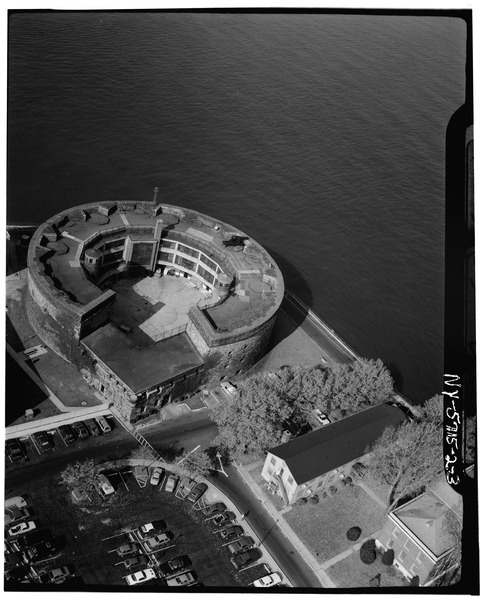
The man who oversaw the design and construction of this fort was Lieutenant Colonel Jonathan Williams, Chief Engineer of the United States Army Corps of Engineers. It’s novel circular formation of enclosed casemates over several levels was the first of its kind, and this design was later replicated in other coastal fortifications.

It is around 40 feet high with a diameter of 210 feet and 8-feet-thick walls. The two lower tiers were each divided into 13 casemates and equipped with 26 cannons. There were no weapons on the third tier as this is where the barracks were housed, and the roof had barbette mounts for a further 26 guns.
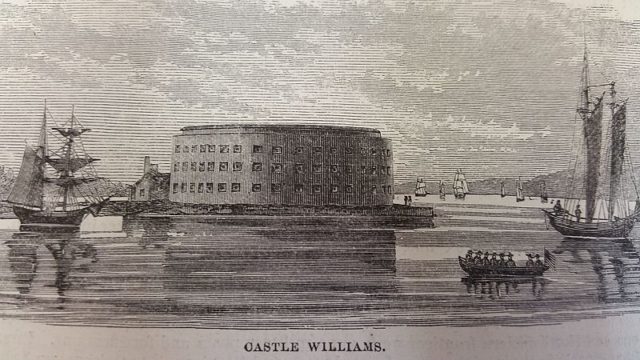
During the War of 1812, the first conflict of Castle Williams’ lifetime, it’s imposing structure was enough to make the British Navy think twice about directly attacking New York harbor. The only shots fired by this fort during the war were during training drills. By the 1830s, it was already becoming outdated and mainly served as barracks.
In the midst of the American Civil War, the casemates of both Castle Williams and Fort Jay were converted into cells. Castle Williams was used as a prison for deserters of the Union army and for captured Confederate soldiers. From 1865 it was used as a low security military prison. It remained a Disciplinary Barracks up until 1965 when the U.S. Army decided to move its forces from Governors Island and take them to Fort Meade in Maryland.
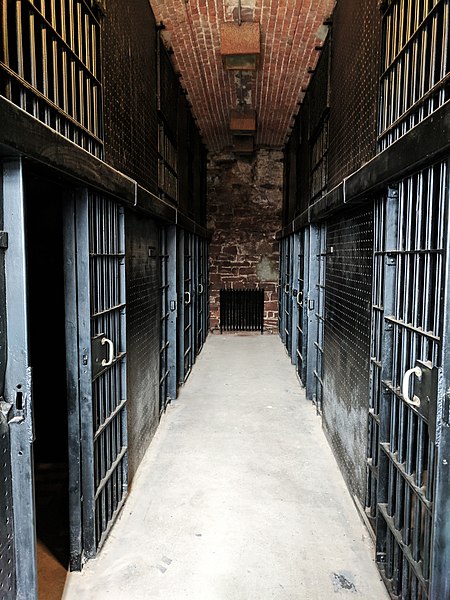
Throughout the late 1800s, the fort gradually fell into a state of disrepair, and it remained that way for years until, in 1895, some improvements and modernization were finally made, including the installment of plumbing and central heating. At the start of the 20th century, the size of Governors Island was doubled by means of landfill and efforts were made to preserve the historic structures found on this island. The gate walls of Castle Williams were renovated and converted into a guardhouse in 1912.
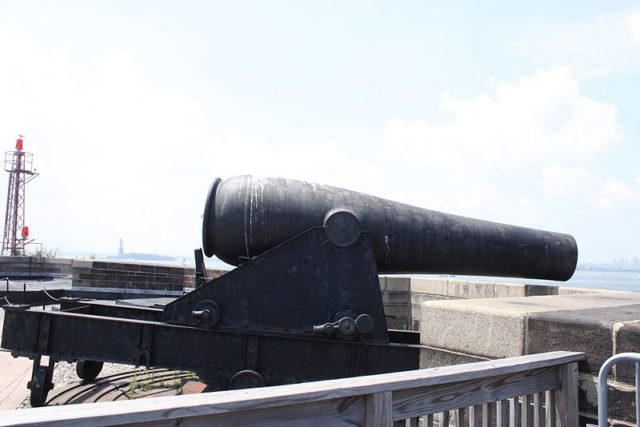
The 1930s saw an overhaul of all the fort’s utilities and steel reinforcements to the roof, and in 1947-8 the wooden external catwalks were replaced with enclosed concrete balconies.
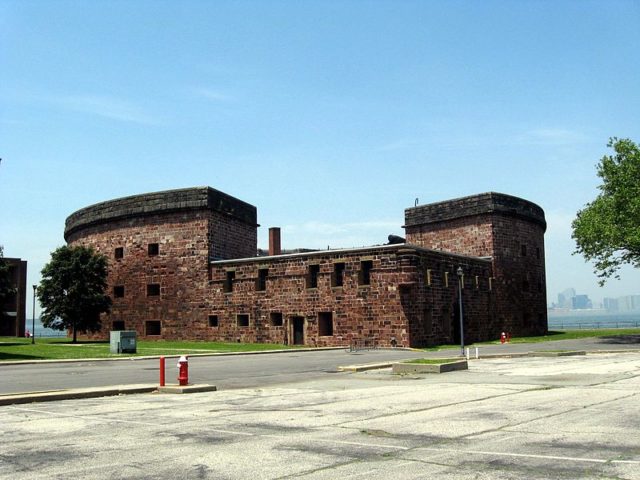
When the U.S. Coast Guard took control in 1966, they initially proposed demolition of Castle Williams. Fortunately that didn’t happen, and instead a community center was set up at the fort, and space was opened up to be used as art studios, photography laboratories, and woodworking shops. These facilities were relocated by the mid-1970s, leaving Castle Williams as a storage and shop space for the Coast Guard until 1997.
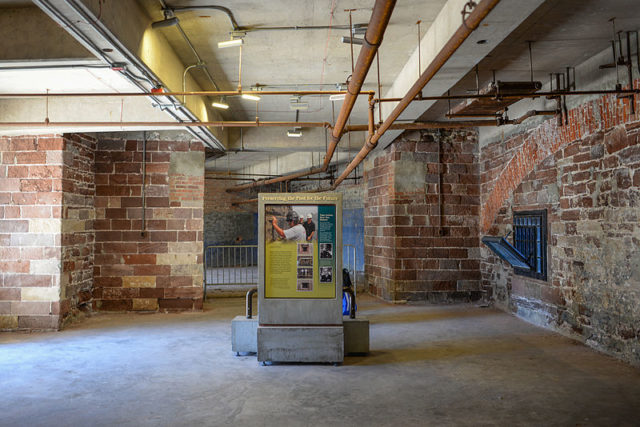
Even though Castle Williams had been placed on the National Register of Historic Places in 1972, the fort was left in neglect for some time; the roof caved in allowing weather damage to the interior.
Since coming under the jurisdiction of the National Park Service in 2003, a program of renovation and preservation has been implemented. Today it remains open to all those who visit Governors Island National Monument.
